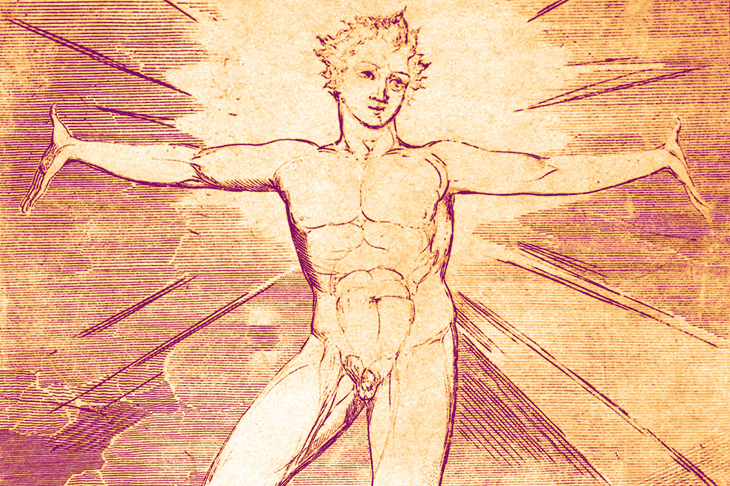On 3 September 1968, Allen Ginsberg appeared on William F. Buckley’s Firing Line. Buckley exposed Ginsberg’s politics as fatuous — the blarney, stoned — but Ginsberg stole the aesthetic victory by reading ‘Wales Visitation’, a homage to William Blake. ‘White fog lifting and falling on mountain brow,’ Ginsberg intones, ‘…teeming ferns/ exquisitely swayed/ along a green crag/ glimpsed through mullioned glass in valley rain.’
‘Nice,’ Buckley nods. He lets Ginsberg read the whole poem. Ginsberg opposes the artificial imagery of power and money (‘London’s symmetrical thorned tower / & network of TV pictures flashing bearded your Self’) to the vision of the unmediated, natural Self: ‘Each flower Buddha-eye.’ After six minutes, the roots of Christianity mesh with oriental religion in a vision of physical liberation and spiritual democracy: ‘Sounds of Aleph and Aum / through forest of gristle… All Albion one.’
‘I kinda like that,’ Buckley admits. Even secondhand and soiled, the visionary voice cannot be denied. Buckley believed that ‘the ideologues, having won over the intellectual class’, had now ‘simply walked in and started to run things’. Blake had stood athwart history, yelling ‘Stop’ to the rationalising, systematising civilisation that coalesced in Georgian London, then conquered the world after 1945. The further the market spread, the higher Blake’s stock rose. In 1863, Blake’s first biographer Alexander Gilchrist called his subject pictor ignotus, the unknown painter. A century later, Blake was a universal poet, the prophet of spiritual revolt in what Buckley called ‘an age of conformity’.
Blake’s belatedness encourages us to judge him not by his works, but his admirers. A century before Firing Line, Swinburne, anticipating Allen Ginsberg in Blake: A Critical Essay (1868), spotted ‘the points of contact and sides of likeness between William Blake and Walt Whitman’. But Blake, working with ‘Ages & Generations’ in mind, had hoped for the Blake revival.









Comments
Join the debate for just £1 a month
Be part of the conversation with other Spectator readers by getting your first three months for £3.
UNLOCK ACCESS Just £1 a monthAlready a subscriber? Log in